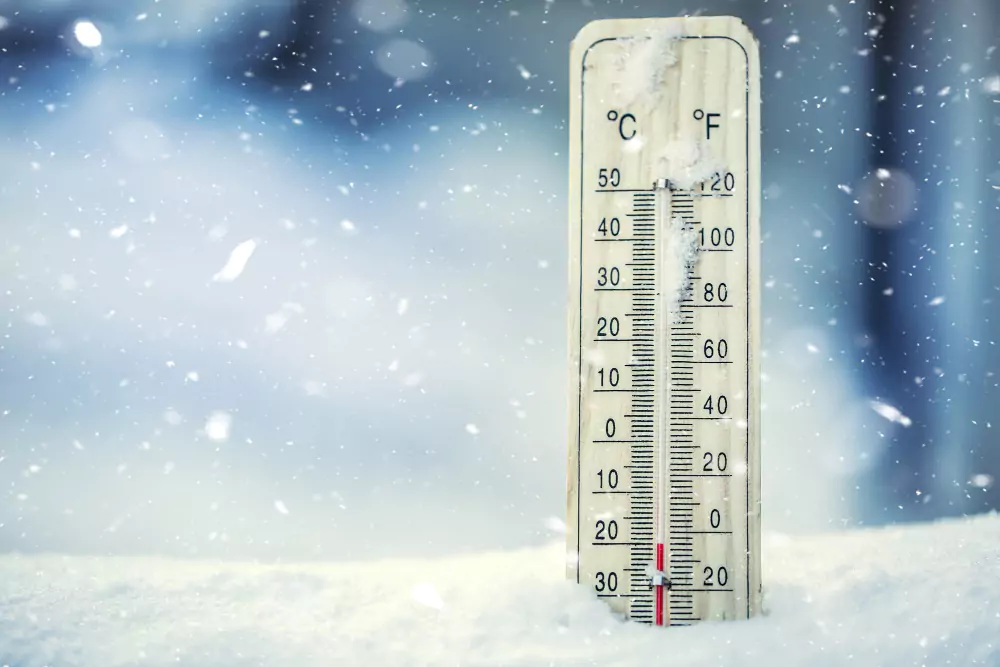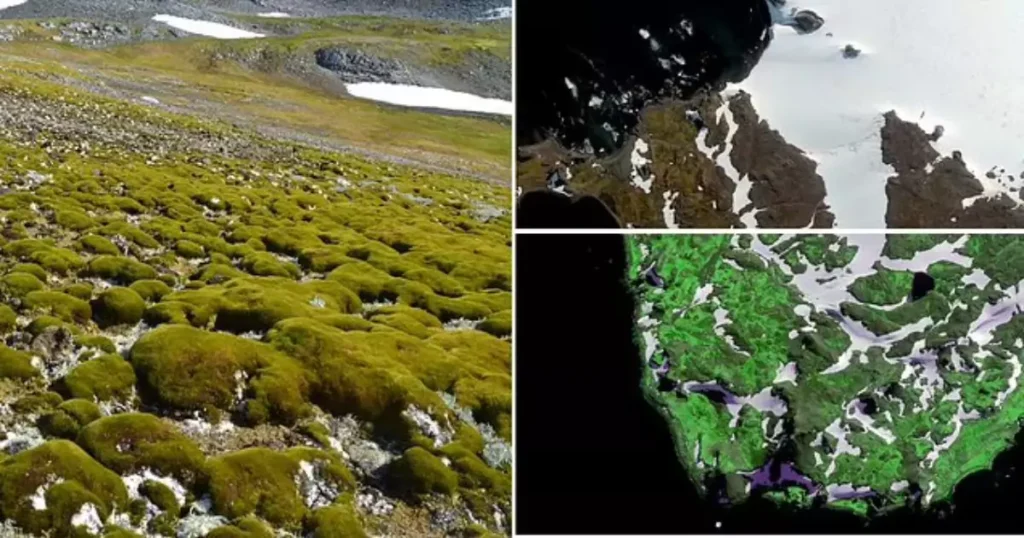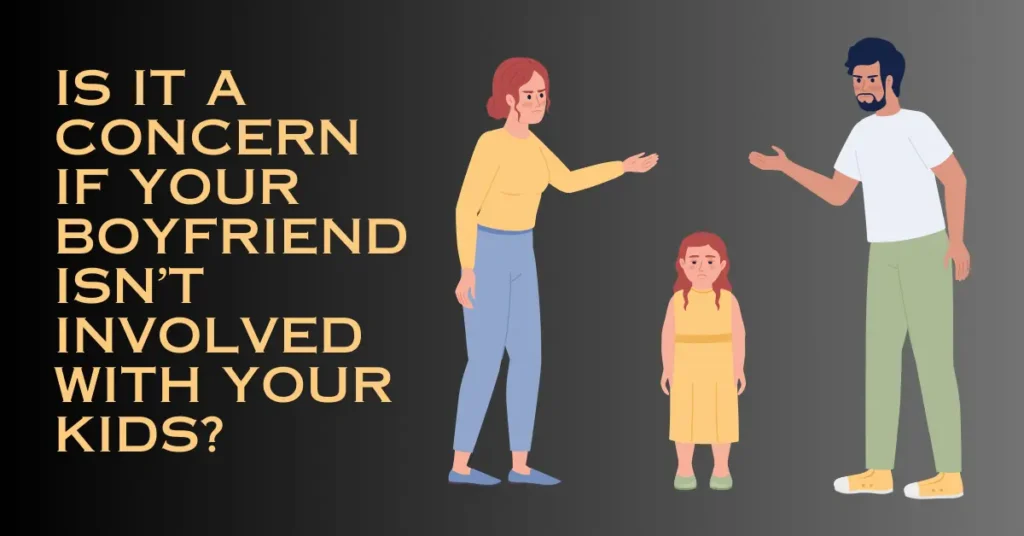
In a surprising development, the Atlantic Ocean has started cooling at a record-breaking pace, baffling scientists and experts alike. For years, the Atlantic’s surface temperatures have been on the rise, driven by human-caused climate change and global warming. Yet, since May 2023, something unexpected has happened: the surface temperatures of the Atlantic have started to plummet. The question now is: what could be causing this rapid cooling, and what does it mean for the future of our climate?
Record-Breaking Heat Followed by Sudden Cooling
Over the last few years, the Atlantic Ocean has experienced record-breaking temperature increases. According to the National Oceanic and Atmospheric Administration (NOAA), the ocean’s surface was consistently warmer than average due to climate change. However, this trend reversed in an unexpected and puzzling way starting in May 2023. Surface temperatures began dropping quickly, and the Atlantic is now 1 to 2 degrees Fahrenheit cooler than expected for this time of year.
Oceans are typically susceptible to changes in weather patterns, especially during certain times of the year. During the warmer months, surface temperatures are expected to rise, partially due to human-caused climate change and the natural occurrence of El Niño. The sudden and rapid cooling of the Atlantic has experts scratching their heads, and no clear explanation has yet been found.

The Role of El Niño and La Niña in Ocean Temperatures
To better understand the mysterious cooling of the Atlantic, we must first look at two critical weather patterns: El Niño and La Niña. Both of these natural phenomena can have a profound effect on ocean temperatures and global weather patterns.
- El Niño occurs when ocean temperatures rise, particularly in the Pacific Ocean, and it can lead to higher temperatures across the globe, including in the Atlantic Ocean. In 2023, a strong El Niño event contributed to the Atlantic’s record-high temperatures.
- La Niña, on the other hand, refers to cooler-than-normal ocean temperatures and is considered the “cooler counterpart” to El Niño. While typically associated with the Pacific, La Niña can also influence the Atlantic’s temperatures.
Earlier this year, scientists expected the Atlantic to remain under the influence of El Niño, which would continue driving warmer temperatures. However, data now suggests that La Niña may be arriving much earlier than anticipated. Instead of warming, the Atlantic is cooling at an unexpected rate. La Niña typically brings cooler temperatures in the later months, but this shift has happened far ahead of schedule, catching scientists off guard.
The Puzzling Nature of the Cooling Atlantic
What makes this cooling trend particularly unusual is that scientists have yet to identify the exact cause. While La Niña could offer an explanation, the speed and intensity of the temperature drop are not typical.
Frans Philip Tuchen, a postdoctoral researcher at the University of Miami, expressed his frustration in an interview with New Scientist: “We’ve gone through the list of possible mechanisms, and nothing checks the box so far.” This uncertainty has left researchers searching for answers as they continue to monitor the Atlantic for further changes.
The NOAA data reveals that while El Niño was expected to dominate weather patterns through 2023, its counterpart, La Niña, may have taken over. The sudden cooling is difficult to explain, as the exact triggers for such early La Niña conditions remain unclear. Factors such as trade winds, rainfall patterns, and solar heating all contribute to the complex weather systems that affect ocean temperatures. However, no single explanation accounts for this rapid and surprising shift.
How the Cooling Atlantic Affects the Global Climate
The cooling of the Atlantic Ocean could have far-reaching consequences for weather patterns, ecosystems, and even human populations. Scientists are paying close attention to the effects this shift could have on surrounding continents and oceans.
Increased Likelihood of Hurricanes
One of the immediate concerns is the potential for increased hurricane activity in the Atlantic region. NOAA has warned that the cooler Atlantic may lead to a higher likelihood of hurricanes, particularly around the Cape Verde islands. Hurricanes feed on warm ocean water, so the cooling could shift both the intensity and location of these powerful storms. Coastal regions need to be prepared for a potentially unpredictable hurricane season.
Disrupted Rainfall Patterns
La Niña, which brings cooler ocean temperatures, is known to alter global rainfall patterns. Some areas may experience long periods of drought, while others could be hit by intense flooding. The southeastern United States, parts of Africa, and areas of South America are particularly vulnerable to these changes. These shifts in weather could have severe consequences for agriculture, water resources, and local ecosystems.
Impact on Marine Ecosystems
Marine life is highly sensitive to changes in ocean temperature, and a cooler Atlantic could disrupt the delicate balance of these ecosystems. Fish populations, in particular, are vulnerable to rapid temperature fluctuations. Migration patterns could change, and some species may face challenges reproducing in cooler waters. Coral reefs, already under stress from climate change, could also suffer further damage from the sudden shift in temperature.
A Tug of War Between Oceans
Michael McPhaden of NOAA has proposed an interesting theory: the Atlantic’s cooling may be delaying the Pacific Ocean’s transition into La Niña. He described the situation as a “tug of war,” with the Pacific trying to cool down while the Atlantic struggles to warm back up. This could create an imbalance between the two oceans, leading to unpredictable weather patterns across the globe.

Precautions to Consider Amidst Atlantic Cooling
While scientists work to understand the causes behind this rapid cooling, it’s important to take precautions in response to the potential effects. Here are some steps that individuals, communities, and governments can take to minimize risks and adapt to this changing climate.
Preparing for Hurricane Season
Given the increased likelihood of hurricanes, especially near the Cape Verde islands, coastal communities should strengthen their emergency preparedness plans. Updating evacuation routes, stockpiling essential supplies, and improving infrastructure resilience will help minimize the impact of unexpected storms. Authorities should also raise awareness about the heightened risks to ensure residents are well-informed and prepared.
Adapting Farming Practices
Farmers should be aware of the possibility of disrupted rainfall patterns. Droughts may become more common in some areas, while others could face excessive rainfall. Adopting water-saving irrigation techniques and switching to drought-resistant crops will help mitigate the impact of these changes. In regions at risk of flooding, farmers should take measures to protect their crops and livestock from heavy rains.
Protecting Marine Life
Governments and environmental organizations should increase monitoring of marine ecosystems, particularly in regions most affected by the cooling Atlantic. Fisheries may need to impose temporary restrictions to prevent overfishing in areas where fish populations are struggling. Efforts to reduce pollution and other stressors should be ramped up to help vulnerable species adapt to these sudden changes.
Keeping Informed
Staying up to date with weather forecasts and environmental reports will help people make informed decisions, especially in regions prone to hurricanes, floods, or droughts. Awareness of potential risks allows individuals to plan ahead and minimize the impact on their daily lives.
What’s Next? The Future of the Atlantic Ocean’s Cooling
The Atlantic Ocean’s rapid cooling has raised many questions, and scientists are working tirelessly to find answers. While La Niña offers a possible explanation, the rapid nature of the cooling remains a mystery. Further research will be needed to fully understand the underlying mechanisms behind this sudden change and to predict how it may affect global weather patterns in the future.
The NOAA continues to monitor the Atlantic closely, and scientists worldwide are collaborating to study the data in hopes of solving this puzzle. If the Atlantic continues to cool, the effects could ripple out across the world, altering weather patterns, ecosystems, and human activity for months, or even years, to come.
Uncertainty in the Face of a Changing Climate
The Atlantic Ocean’s cooling is a startling reminder that climate change does not always manifest in ways we expect. While much of the world is grappling with rising temperatures and extreme heatwaves, the Atlantic has thrown a curveball by cooling at record speed. This mysterious event has left scientists puzzled, and the full consequences are yet to be understood.
As we wait for more data and continue to monitor the Atlantic, it’s clear that we need to remain vigilant and take precautions. From preparing for unpredictable hurricanes to adapting farming practices and protecting marine ecosystems, the potential impacts of this cooling trend require proactive measures.
While the mystery of the Atlantic’s cooling remains unsolved, the situation highlights the need for ongoing research into the complexities of our planet’s climate. By better understanding these rapid shifts, we can develop strategies to adapt and mitigate the risks posed by a rapidly changing world.

























































































































